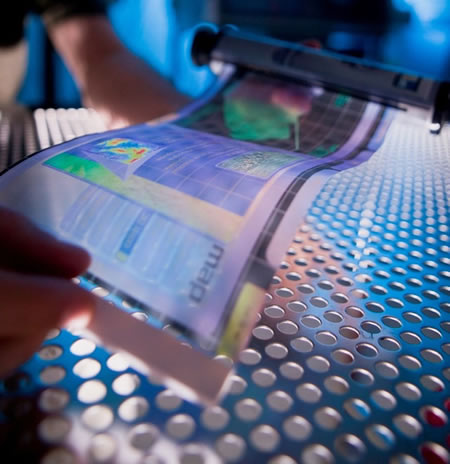Thin paper-like displays came one step closer to reality today, with HP Labs and the Flexible Display Center at Arizona State University unveiling the first working prototype of a supposedly affordable flexible display. The display is made almost entirely out of plastic which enables it to be easily portable and consume less power than typical displays available today - it's also said to use up to 90 percent less material that would be needed for a regular LCD, hence the low cost claims.

The researchers created the flexible displays by using self-aligned imprint lithography (SAIL) technology, invented by HP Labs, which enables the fabrication of thin film transistor (TFT) arrays on flexible plastic in what HP claims is a low cost and "roll to roll" manufacturing process. Potential uses for the new flexible displays, according to HP and the FDC, are in electronic paper and future electronic devices that could use the extra battery life, such as smartphones and notebook computers.
Exactly how long it will be until we see the technology in actual consumer products has not been disclosed, but HP expects the first units to be available to the U.S. Army for trials in the next three years.